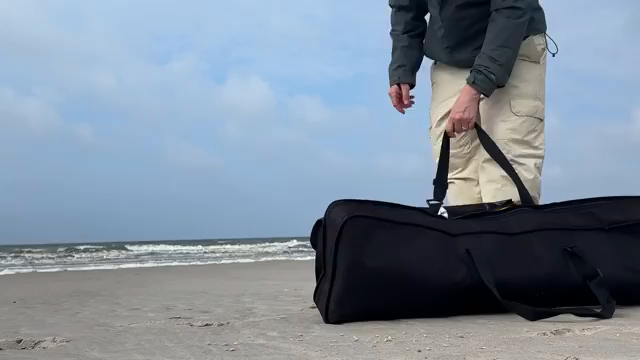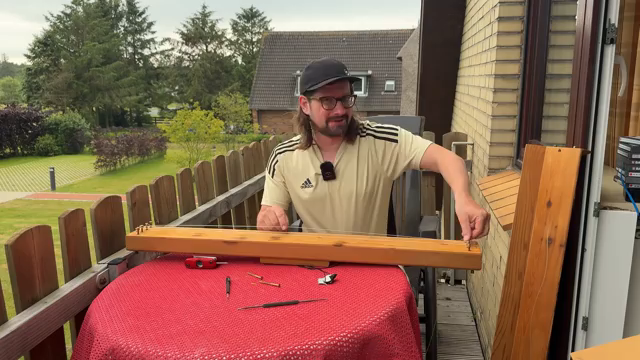Join Hainbach as he embarks on a sonic adventure on the windswept island of Amrum, crafting a film score with an ancient Aeolian harp. Explore the intersection of nature and sound in his unique approach to capturing the essence of wind for the film ‘Amrum’.

10. October 2025
LUMINA
Hainbach’s Wind Harp Journey: Weaving Sound into Cinema
Aeolian harp, Nagra tape recorder, Rakoti Blimp, Rakoti Deadcat, Sennheiser AT40 microphones
Arrival on Amrum: A Quest for Wind
Hainbach takes us on a journey, arriving at the serene island of Amrum. His mission is one of capturing the intangible – the whispers and howls of the wind itself. The director, Fatih Akin, envisioned a score that ‘sounds like the wind’, and so Hainbach sets about collecting the very breath of the island. His tool of choice? The Aeolian harp, an instrument rooted in ancient Greek tradition and renowned in German Romanticism. In this landscape, where the wind is both presence and companion, Hainbach sets out to make the air itself sing.
Sonic Exploration: Harnessing the Elements
Carrying a recording setup laden with microphones and a Nagra tape recorder, Hainbach wanders the deserted beaches of Amrum. Here, every step is a tactile dance between sand and sea, each grain a potential note in his evolving symphony. As the wind caresses the strings of the Aeolian harp, it creates a natural symphony, resonant with history and evocative of the island’s deep, timeless breaths. The setup is meticulous – with contact mics and cardioid microphones poised to capture the delicate blend of air and water. Yet, even on this canvas of nature, challenges arise, with elements like sand and moisture testing his resolve.

"Amazing."
The Art of Tuning: Embracing the Imperfections

"This tuning sounds incredibly ominous."
In Hainbach’s process, tuning becomes an act of subtle artistry. As the strings of the Aeolian harp stretch and settle beneath the North Sea gale, adjustments are made not for perfection, but for character. Detuning, it turns out, introduces a world of dissonance and unexpected harmonies. This narrative of sound, with its hints of ominous beauty, echoes the sentiment that music of the ancients and today’s compositions can indeed share a breath of inspiration. Here, the instrument is not just played but inhabited, each note a dialogue with the wind.
A Journey of Sound: From Beach to Studio
Hainbach’s approach to scoring involves immersing himself fully in the environment he seeks to translate into sound. Upon returning to his studio, he delves into a sonic ocean amassed on eight reels of tape. The process is as much about discovery as creation; each playback reveals layers previously unheard, the slow unspooling of tape transforming the raw recordings into a tapestry of windswept melodies. As the music unwinds, Hainbach adds minimal instrumentation – a fan organ here, a piano note there – respecting the innate complexity of his wind-born material. The question of how much of this raw essence will find its way into the final soundtrack becomes a secondary concern to the overwhelming richness of the auditory experience itself.

"I don't think you're supposed to do this a lot, since this is all wood screws."
The Intersection of Art and Serendipity
In a twist of fate, much of Hainbach’s experimental recordings find their way into the final cut of ‘Amrum’. Collaborating closely with editor Fatih and others, Hainbach experiences the transformative power of film, where soundscapes shape scenes at the soul’s edge. The setting of Amrum, recorded faithfully by its native elements, merges seamlessly with the WWII drama’s narrative. Through these sessions, a new dialogue forms between environment and emotion, each frame enhanced by the wind’s whisper. The synergy between intended score and natural resonance underscores the art of sound in cinema.
Reflections and Release: The Wind Harp's Legacy
With the film debuting internationally, Hainbach reflects on the organic journey that led him to Cannes and beyond. From the island’s tranquil isolation to the film festival’s bustling atmosphere, the contrast underscores the emotive power of place and sound. The release of “Amrum, The Harp Tapes” stands as a testament to the project’s success, offering listeners a glimpse into the unfiltered beauty of his recordings. This compilation serves as both an artifact of the unique scoring process and an invitation into the meditative resonance of Amrum’s landscape. For Hainbach, this endeavor reaffirms that true artistry lies in embracing the unpredictable conversations between nature and creativity.
Latest articles
Watch on YouTube:
https://www.youtube.com/Hainbach
Sponsored links:
If you purchase via these links, we may earn a small commission – at no extra cost to you.
🔗 Check price on Amazon
🔗 Check price on Amazon